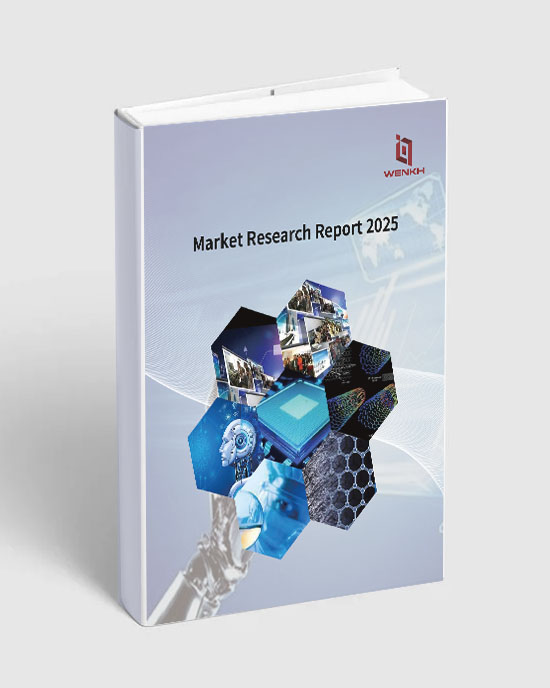
Global AI Edge Computing Boxes Market Size, Competition Landscape and Supply Chain Research Report 2025



Research Summary
AI edge computing boxes are compact, high-performance computing devices designed to process artificial intelligence tasks directly at the network edge—close to data sources like cameras, sensors, or machines—rather than relying on centralized cloud servers. These boxes integrate powerful processors, GPUs, or specialized AI chips to enable real-time data analysis, machine learning inference, and decision-making with minimal latency. Commonly used in smart cities, industrial automation, retail, and autonomous systems, AI edge computing boxes enhance responsiveness, reduce bandwidth usage, and improve data privacy by keeping sensitive information local while supporting intelligent, decentralized operations.
According to WENKH research statistics, the global AI Edge Computing Boxes market size will reach 873.17 Million USD in 2025 and is projected to reach 1,963.11 Million USD by 2032, with a CAGR of 12.27% (2025-2032). Among them, the Asia-Pacific AI Edge Computing Boxes market is undergoing rapid changes, reaching Million USD in 2025, accounting for approximately % of the global market share. It is projected to reach Million USD by 2032.
The global AI Edge Computing Boxes market is highly competitive, with key market players including Alibaba Cloud, Lenovo, Advantech, Zhejiang Dahua, Hangzhou Hikvision, Huawei, AAEON Technology, Twowin Technology, Guangzhou Embedded Machine Technology, Tencent, ADLINK Technology, Baidu, Eurotech, Jwipc Technology, Thundercomm, EDGEMATRIX, Shenzhen Geniatech, Shenzhen CoreRain, Shenzhen Smart Device Technology, Sichuan Wanwu Zongheng Technology, Beijing Sophgo, ARBOR, Forecr, Newland Digital Technology, Hangzhou Yanzhi Technology, Shenzhen Micagent, Beijing NexGemo Technology, Shenzhen King Histrong, Guangzhou STONKAM, Changzhou Haitu Electronic, PlanetSpark, Ingrasys, Inventec, Mistral Solutions, Amnimo Inc, Sangfor Technologies, AsiaInfo Technologies Limited, China Telecom Cloud Technology, Anhui Chaoqing Technology, etc. This report categorizes the competitive landscape of the global AI Edge Computing Boxes market into three tiers based on annual revenue, with the top three market players holding approximately % of the total market share.
This report provides an in-depth analysis of the global AI Edge Computing Boxes market, including market size, price trends, market status and future development prospects. It particularly focuses on the market share, product characteristics, pricing, revenue, sales volume and gross profit margin of major manufacturers in the global AI Edge Computing Boxes industry. Additionally, this report provides an in-depth analysis of the market status and future development trends of different segments of AI Edge Computing Boxes and their downstream application fields.
In terms of data coverage, this report includes extensive time-series data. Historical data spans from 2020 to 2024, providing a solid foundation for analyzing market development trends. The year 2025 is used as a base year to accurately assess the current market landscape, while forecast data extends from 2026 to 2032, using scientific analysis methods and models to offer forward-looking projections and insights into the market's future trajectory. This provides valuable reference information for industry participants and stakeholders.
The report covers regions and countries including North America, Europe, China, Asia Pacific (excluding China), Latin America, the Middle East, and Africa. It particularly focuses on the revenue and sales volume of AI Edge Computing Boxes in these regions and countries, as well as the market share of key market players in each region. The report provides an in-depth analysis of the regional distribution and future development trends of the AI Edge Computing Boxes market. By considering local policies, this report evaluates the market prospects of AI Edge Computing Boxes in each region and country, aiming to help companies gain a comprehensive understanding of the industry characteristics and development potential in different regions, optimize regional business layout, and develop precise market strategies to achieve global development goals.
This report places significant emphasis on data quality and reliability, leveraging a wide range of data sources to ensure accuracy and validity. Primary data collection is conducted through multiple channels, including in-depth interviews with senior corporate executives, industry experts, supply chain participants, and end consumers. This helps to gain insights into corporate strategic planning, industry policies, supply chain dynamics, and user experiences. Secondary data sources cover an extensive range, including authoritative government statistics, customs databases, industry related reports, third-party paid databases, investment research reports, academic studies, corporate financial statements, real-time media updates, and information from international organizations, all of which serve as a solid foundation for data verification and analysis.
Companies Covered
Alibaba Cloud
Lenovo
Advantech
Zhejiang Dahua
Hangzhou Hikvision
Huawei
AAEON Technology
Twowin Technology
Guangzhou Embedded Machine Technology
Tencent
ADLINK Technology
Baidu
Eurotech
Jwipc Technology
Thundercomm
EDGEMATRIX
Shenzhen Geniatech
Shenzhen CoreRain
Shenzhen Smart Device Technology
Sichuan Wanwu Zongheng Technology
Beijing Sophgo
ARBOR
Forecr
Newland Digital Technology
Hangzhou Yanzhi Technology
Shenzhen Micagent
Beijing NexGemo Technology
Shenzhen King Histrong
Guangzhou STONKAM
Changzhou Haitu Electronic
PlanetSpark
Ingrasys
Inventec
Mistral Solutions
Amnimo Inc
Sangfor Technologies
AsiaInfo Technologies Limited
China Telecom Cloud Technology
Anhui Chaoqing Technology
Product Segment
Below 20 TOPS
20-100 TOPS
Above 100TOPS
Product Application
Smart Manufacturing
Smart City
Retail
Smart Mine
Autonomous Vehicles
Others
Chapter Scope
Chapter 1: Product Statistical Scope, Product Segmentation Types and Downstream Applications, Overall Market Size, Current Status and Development Prospects
Chapter 2: Global AI Edge Computing Boxes Industry Chain Analysis
Chapter 3: Global AI Edge Computing Boxes Industry Environment Analysis and Porter's Five Forces Analysis
Chapter 4: Analysis of the Competitive Landscape of Major Companies in the Global AI Edge Computing Boxes Market (Market Share, Product Revenue and Sales Volume Comparison, Tier Division, Corporate Expansion and M&A Trends)
Chapter 5: Analysis of Global Major Companies (Company Profiles, Product Features and Product Segment, Product Revenue, Product Sales Volume, Product Average Price, Product Gross Profit Margin and Geographical Sales Share)
Chapter 6: Global AI Edge Computing Boxes Product Segment, Downstream Application and Major Regional Market Size Analysis (Sales Volume, Revenue and Average Price)
Chapter 7: North America AI Edge Computing Boxes Product Segment, Downstream Application, and Major Countries Market Size Analysis (Sales Volume, Revenue and Average Price)
Chapter 8: Europe AI Edge Computing Boxes Product Segment, Downstream Application, and Major Countries Market Size Analysis (Sales Volume, Revenue and Average Price)
Chapter 9: China AI Edge Computing Boxes Product Segment, Downstream Application, and Major Countries Market Size Analysis (Sales Volume, Revenue and Average Price)
Chapter 10: Asia Pacific (excluding China) AI Edge Computing Boxes Product Segment, Downstream Application, and Major Countries Market Size Analysis (Sales Volume, Revenue and Average Price)
Chapter 11: Latin America AI Edge Computing Boxes Product Segment, Downstream Application, and Major Countries Market Size Analysis (Sales Volume, Revenue and Average Price)
Chapter 12: Middle East and Africa AI Edge Computing Boxes Product Segment, Downstream Application, and Major Countries Market Size Analysis (Sales Volume, Revenue and Average Price)
Chapter 13: Research Conclusion
Chapter 14: Methodology and Data Source
Purpose and Value of the Report
Market Trend Insights: Analyze industry trends, market dynamics, and future growth potential to help companies forecast changes and develop strategic plans.
Competitive Landscape Analysis: Understand key players' revenue segmentation, strategies, market share, and business models to guide competitive decisions.
Investment Decision Support: Provide feasibility analysis through market size, growth rate, demand trends, and potential risks for informed investment decisions.
Target Customer and Demand Analysis: Examine consumer behavior, purchasing preferences, and pain points to optimize products and improve market penetration.
Policy and Regulatory Insights: Interpret relevant industry policies to ensure compliance and mitigate regulatory risks.
Business Model Optimization: Offer data-driven suggestions for enhancing business models and improving profitability.






